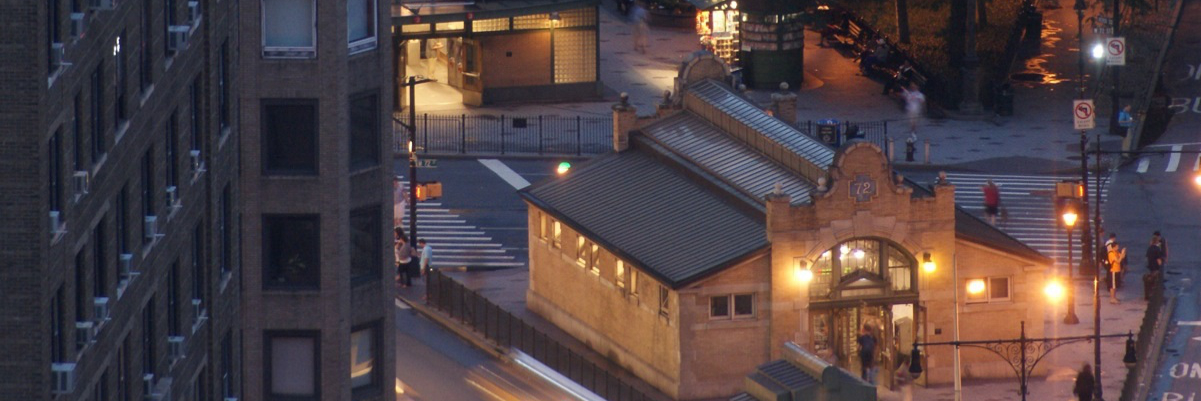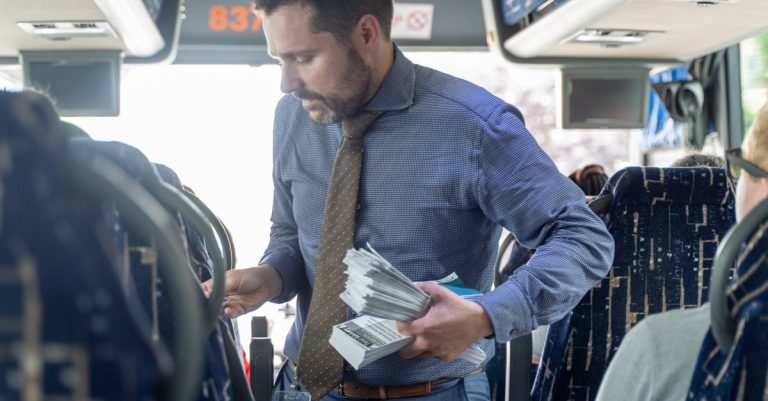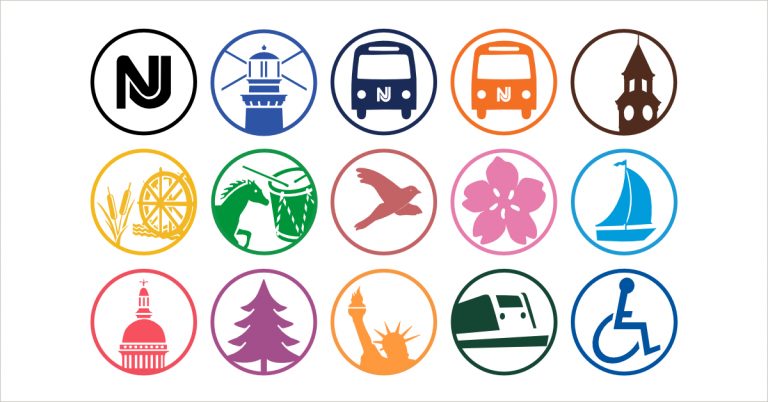Stories Above New York: Capturing the City from Perches High Above the Streets
New York City owes much to the elevator, the engineering achievement that made quick travel beyond a few stories feasible. The vertical advance reached a fever-pitch by the early 20th century and has continued unabated ever since, giving the city some of its most iconic landmarks and stunning views.
From 2011-2013, I undertook a project to photograph New York from above the city, but still within it. Stories Above New York was featured in Brick Underground, CityLab, Cityscape, Curbed NY, Gizmodo, Next City, Spacing Atlantic, Untapped Cities and the Wall Street Journal.

I started this project in January 2011, not long after I began working in an office building on the corner of 51st Street & Madison Avenue, with a wraparound balcony on the 22nd floor. The views from this vantage point include Rockefeller Center, St. Patrick’s Cathedral, the Burberry Building, Palace Hotel, St. Bartholomew’s Church, Park Avenue, and Madison Avenue (with glimpses of the rising new World Trade Center in Lower Manhattan).
After photographing these views, I started bringing my camera along whenever business meetings or social events gave me the opportunity to be in a building with elevated views of the city. I am also grateful to numerous supporters of the project who offered me the opportunity to photograph their vantage points.
One of my favorite explorations of the city’s built environment is David Macaulay’s Unbuilding, which tells the story of skyscraper engineering and design through a hypothetical account of the dismantling of the Empire State Building by a foreign buyer interested in relocating it closer to his home.
Macaulay’s hypothetical deconstruction of the Empire State Building, with detailed drawings of the building and its Manhattan surroundings, and carefully researched details about its construction, materials, and finishes made me appreciate the built environment of New York all the more. It also helped me imagine what it must have been like for photographers like Berenice Abbott and Margaret Bourke-White, who photographed the dramatic building taking place in the city during the 1920s and ‘30s – often from vantage points high above the bustling streets.
The cities, bound together by railroads and waterways, are organisms which have lived through centuries. Dig beneath them and you find, one above another, the foundations of streets, of houses, of theatres, of public buildings. Search into their history and you will see how the civilization of the town, its industry, its special characteristics, have slowly grown and ripened through the co-operation of generations of its inhabitants before it could become what it is to-day. –Peter Kropotkin
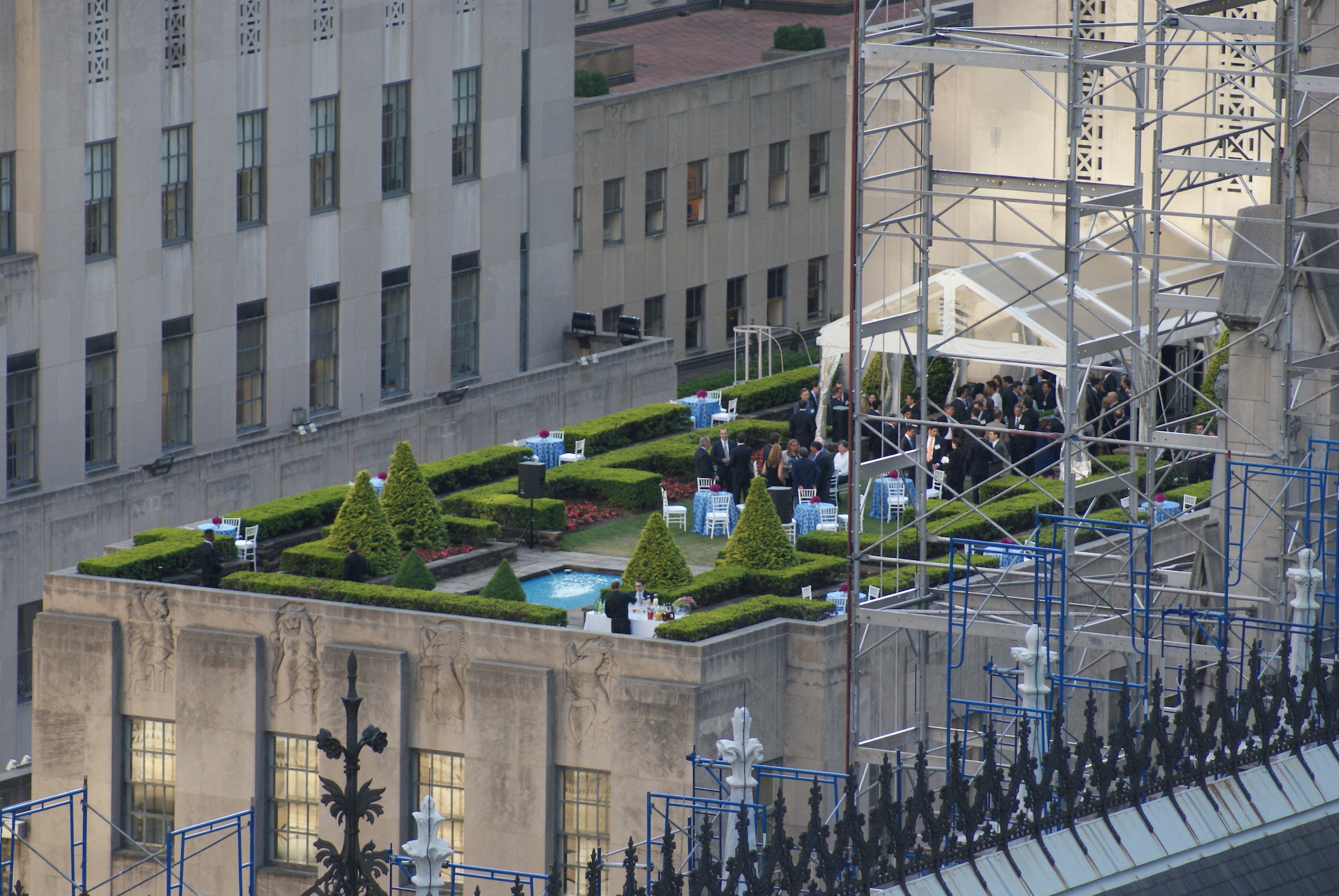
Look at a handful of photographs to get a general impression. Then find your most trusted literary guide. Print out the article, turn off your Internet connection, and do it the old-fashioned way. Rely on your mind’s ample capacity for constructing mental representations. Read. –Sarah Williams Goldhagen

That is when the tower feels just right–above the city but still within it. Traffic streams by on nearby expressways in a blur of red and white light, the Ferris wheel at the Odaiba waterfront entertainment complex whirls with its own bright display, and Tokyo Bay glimmers beneath the illuminated Rainbow Bridge. The ambience seems to appeal to young lovers. Couples who appeared to be out on a date dominated the thin crowd on one warm autumn evening. –Barbara Ireland



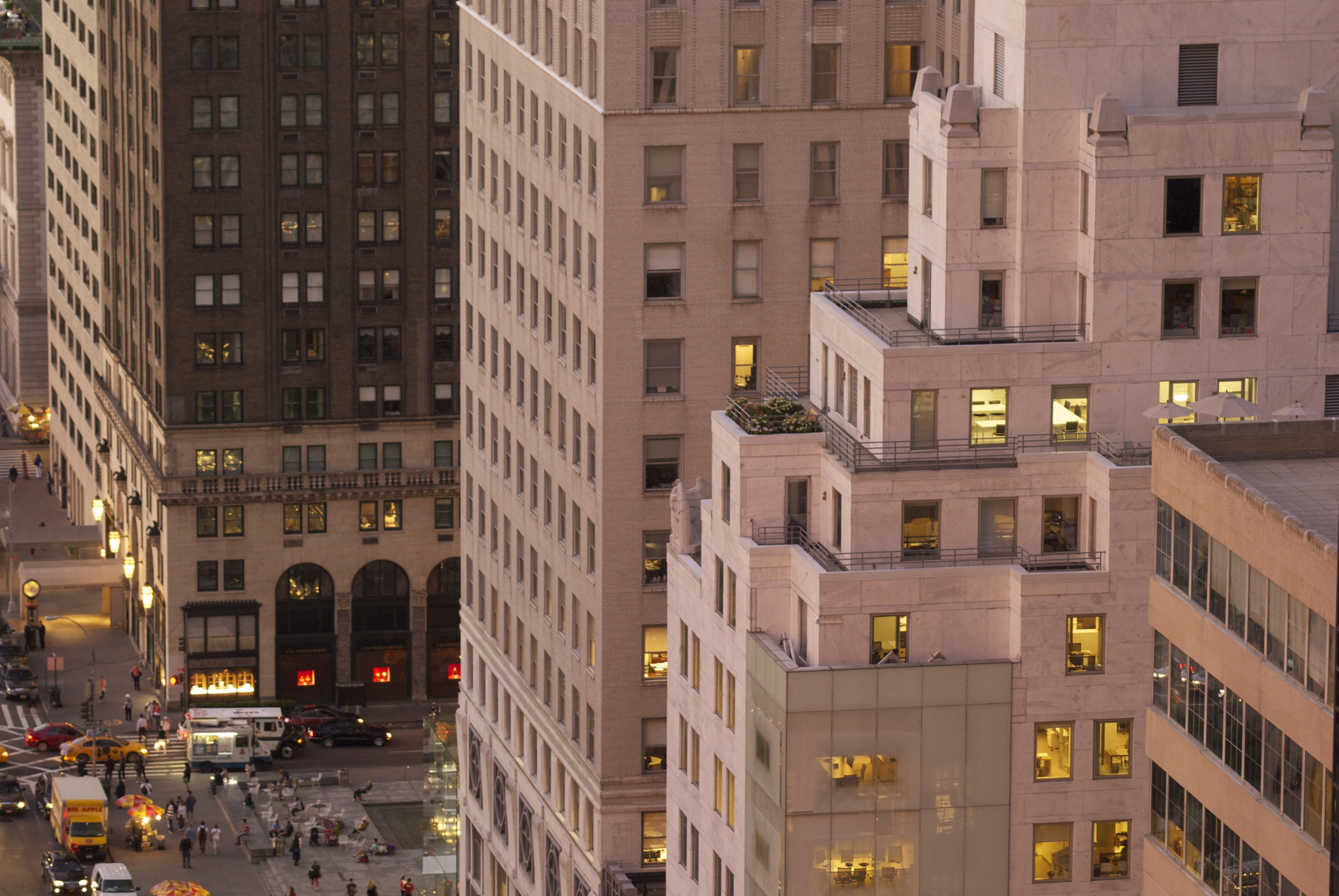
When land is scarce and expensive you build close and high, and Manhattan is an island of solid street walls and shoulder-to-shoulder skyscrapers. The streets that border them are public social space; they are full of life and activity and the promise of whatever lies around the corner. Because the grid is a total democratization of space, with no area designated as more important than any other, every neighborhood creates its own distinct identity, with the capability of reinventing itself, like people, and moving on. –Ada Louise Huxtable


Since it stands so prominently in the cityscape, a high-rise building’s audience includes not only the people who use it, but the many more people who regard its exteriors from a distance, which requires that the architect design for at least two completely different scales, the meta-scale of the urban skyline and the embodied scale of the pedestrians who walk by the building or enter it from the street. A part of the success of the Empire State Building is owed to its impressive presence on the Manhattan skyline, while its base is so deftly proportioned to the pedestrian that, walking by it on 34th Street, you barely know a tall building is there, much less a building that was “the tallest in the world” for so many years. –Sarah Williams Goldhagen





One cannot measure a skyscraper by technical achievements alone. The best ones, like the Hancock and the Empire State Building in New York, transcend engineering and become civic art, oversized embodiments of their cities. They appear on postcards and souvenir plates, in the backgrounds of television news sets. Certainly, Sears and the Hancock–dark, muscular, even a bit menacing–vividly express Chciago’s identity as a no-nonsense, blue-collar town. –Blair Kamin

I have always felt that the fascination of a city like New York, particularly, is that it offers you all of these contrasts, all of these changes. That you still can go back and see the Georgian and the Federal city, that there are still places where you can experience that, and you can experience that right next to some of the newest and grandest skyscrapers. –Ada Louise Huxtable




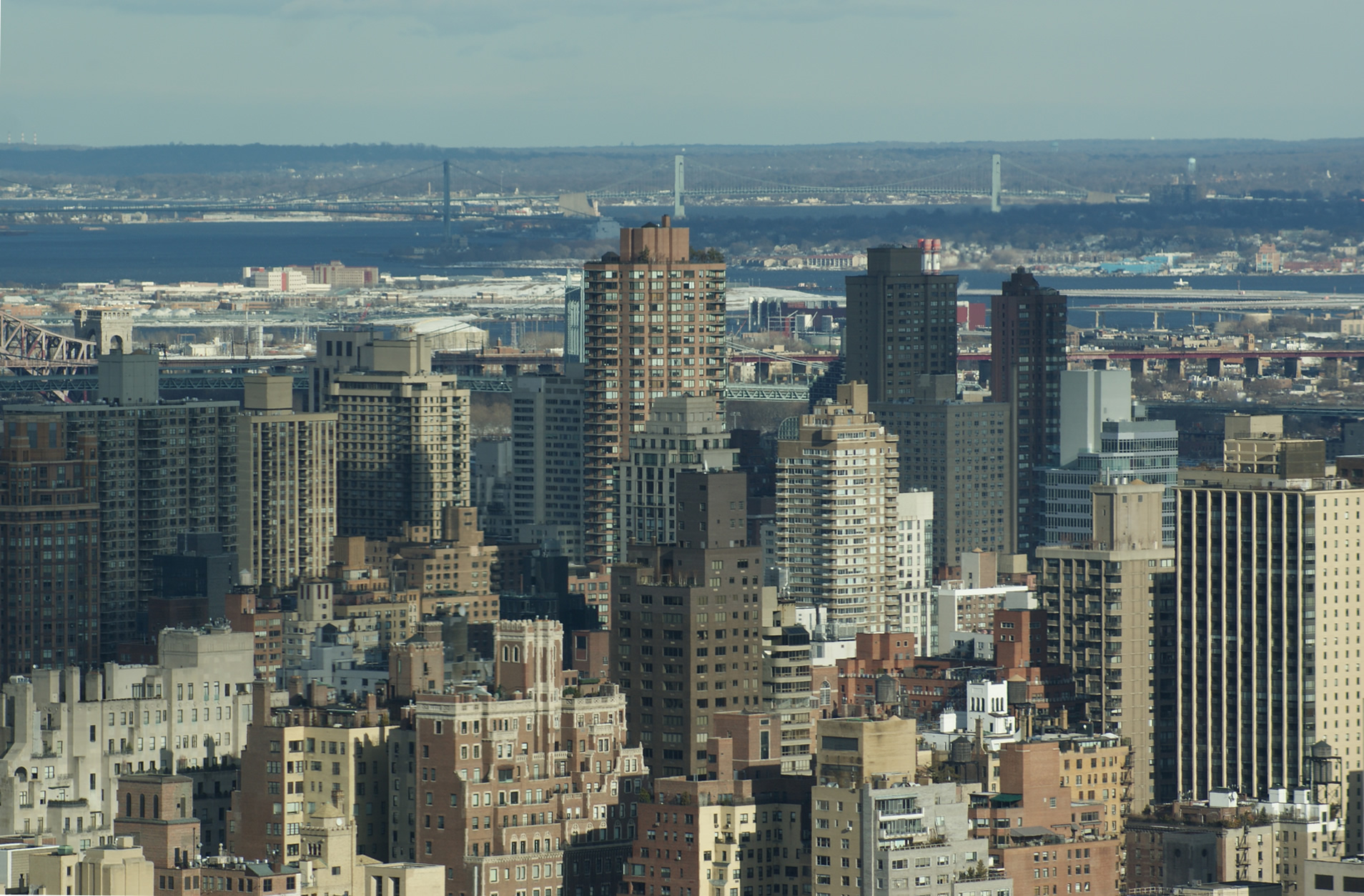


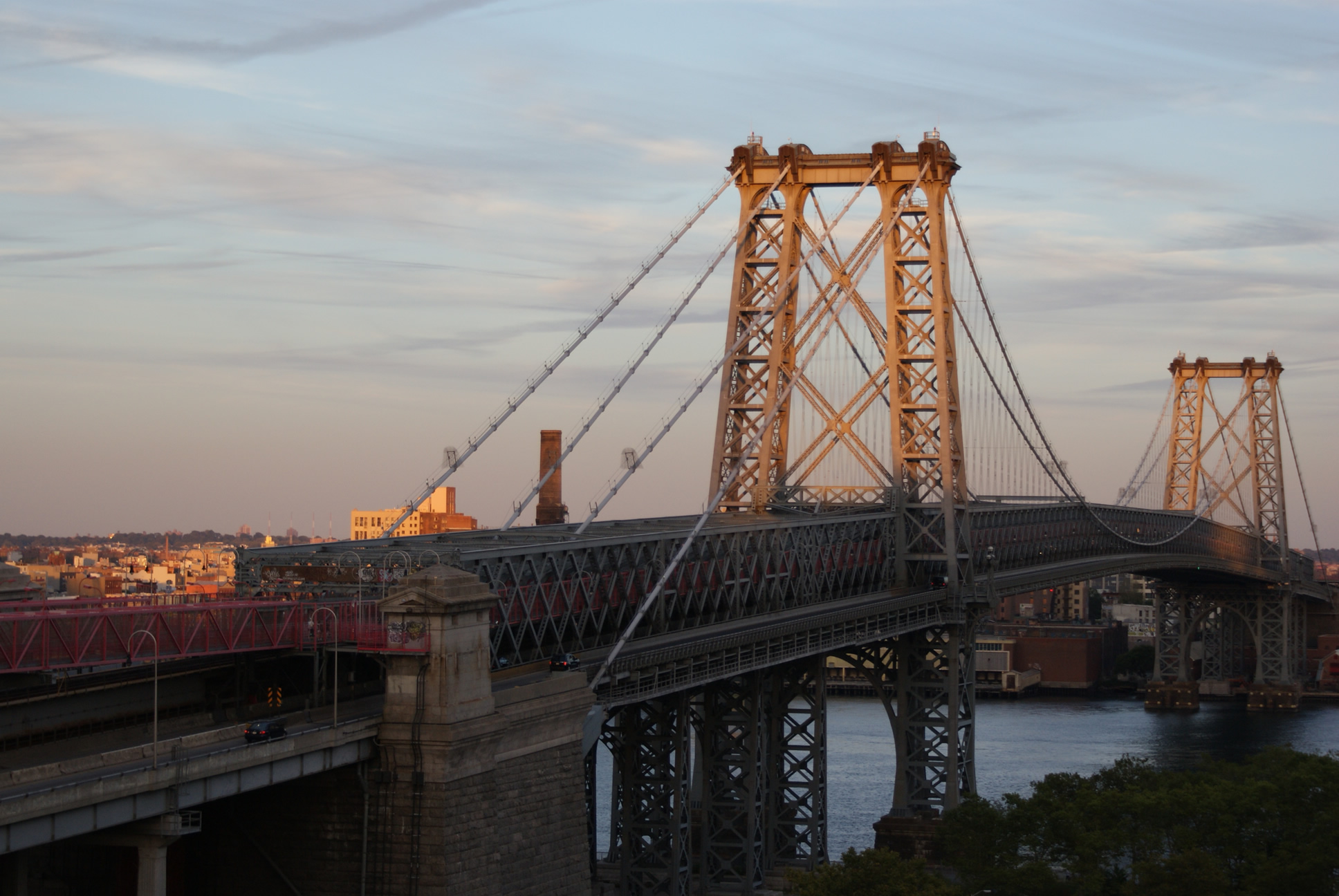
As I took in the surroundings, I was reminded of how different the city can look from unfamiliar angles. In 1929, when the building was built, we would have had a clear view of the East River and Downtown Manhattan. However, in 2005 it was a different story. The newer skyscrapers of Downtown Brooklyn blocked out most of the river, blending together with the buildings of Lower Manhattan. The effect was eerie–a distorted skyline, one still recognizable as New York City, but one that I’d also never seen before. –Moses Gates
Related Reading
- 100 Works Designed and Constructed by Women: Built By Women New York City – In 2014, supported by grants from the New York Building Foundation and the New York Council for the Humanities, the Beverly Willis Architecture Foundation began a project to identify buildings, structures, and built environments in New York City that are designed or constructed by women.
- A Pattern Language by Christopher Alexander, Sara Ishikawa, and Murray Silverstein – Written in 1977 at University of California, Berkeley, and influenced by the emerging pattern languages used to describe software development, this book provides 253 patterns that each describe a problem, then offer a specific remedy. Taken together, they form a language for architecture, urban design, and livable communities that professionals and ordinary people alike can use to improve neighborhoods, towns, and cities. A Pattern Language influenced my own book, Wikipatterns and companion website, which contain a pattern language for building vibrant online communities.
- Straphanger by Taras Grescoe – On a journey that takes him to New York, Moscow, Paris, Copenhagen, Tokyo, Bogotá, Phoenix, Portland, Vancouver, and Philadelphia, Grescoe gets the inside story on the world’s great transit systems, going beneath the streets to see subway tunnels being dug, boarding state-of-the-art streetcars, and hopping on high-speed trains, along the way uncovering new ideas that will help undo the damage a century of car-centric planning has done to our cities. Ultimately he envisions a future with convenient, affordable, and sustainable urban transportation—and better city living—for all.
- The Social Life of Small Urban Spaces by William H. Whyte – With the publication of The Social Life of Small Urban Spaces and its companion film in 1980, the world could see that through the basic tools of observation and interviews, we can learn an immense amount about how to make our cities more livable. In doing so, Holly Whyte laid the groundwork for a major movement to change the way public spaces are built and planned.
- The Spirit of Cities: Why the Identity of a City Matters in a Global Age by Daniel A. Bell & Avner de-Shalit – Bell and de-Shalit look at nine modern cities and the prevailing ethos that distinguishes each one. The cities are Jerusalem (religion), Montreal (language), Singapore (nation building), Hong Kong (materialism), Beijing (political power), Oxford (learning), Berlin (tolerance and intolerance), Paris (romance), and New York (ambition).
- Urban Code: 100 Lessons for Understanding the City by Anne Mikoleit and Moritz Pürckhauer – A primer in urban literacy that teaches us in words and pictures what to notice if we want to understand the city.
- Against Kickstarter Urbanism by Alexandra Lange – “that’s what most urban intervention is. Small steps. Sometimes dirty.” Lange says she sees “the architecture profession, and architects with their big egos in particular, as players in a sort-of human comedy.”
- Failure of the Freestanding Object by Dean Thornton – The most successful urban public realms and streets are those with mid-rise buildings providing a near continuous building frontage that supports an active street life. By contrast, tall buildings that sit as freestanding objects in a plaza, such as Le Corbusier, seek to remove themselves from city and street life, creating soulless spaces that no one spends time in. Developing cities in the Middle East and Asia continue along this disastrous path. The failure of the freestanding object in a space is obvious when one considers that buildings need to have areas for services, carpark access, and other non-active uses. A building in a plaza has nowhere to hide or ability to place these out of view.
- Tracking Hurricane Sandy From Above New York – Throughout the arrival and aftermath of Hurricane Sandy, I gathered photos posted on Twitter of the storm’s impact from above New York. The pictures paint a portrait of a deeply resilient city preparing, withstanding, and recovering from the devastating effects of an unprecedented storm.
- Battery Rooftop Garden Blog – Growing food 35 floors above New York Harbor
- Cap’n Transit Rides Again – Here are some reasons to get people to shift from cars to transit: Reducing pollution, Increasing efficiency, Reducing carnage, Improving society, Access for all
- Charles Komanoff – Energy-policy analyst, transport economist and environmental activist in New York City
- Five Borough Farm – Seeding the future of urban agriculture in NYC. A project of the Design Trust for Public Space in partnership with Added Value
- Gotham Center for New York City History – The Gotham Center’s mission is to examine and explore the city’s rich history, and to make it more accessible to citizens and scholars, teachers and students, locals and out-of-towners.
- Municipal Art Society of New York – Non-profit 501(c)(3) membership organization, founded in 1893, that fights for a more livable New York and advocates for intelligent urban planning, design and preservation
- Regional Plan Association – For over 85 years RPA has been an indispensable source of ideas and plans to policymakers and opinion shapers across the tri-state area. RPA’s in-depth studies, relentless advocacy and staying power ensure that critical transportation, urban development, housing and open space projects move forward across business downturns and election cycles.
- Second Ave. Sagas – Dubbed the Transit Authority by the Village Voice, Second Ave. Sagas has been the home for news, views and commentary on the subway system, MTA and transportation in New York City since November 2006.
- Sound of Buildings – An audio exploration of Melbourne’s most architecturally significant buildings.
- Skyscraper Page: NYC Diagram – Visual reference guide to the buildings in New York, ordered by official height. Includes buildings of built, under-construction and proposed status.
- Tenement Museum Blog – The Tenement Museum preserves and interprets the history of immigration through the personal experiences of the generations of newcomers who settled in and built lives on Manhattan’s Lower East Side, America’s iconic immigrant neighborhood.
- Action Group for Better Architecture in New York (AGBANY) – The Action Group for Better Architecture in New York was formed to advance the public purposes of architecture and planning. AGBANY’s aims included preservation and advocacy. Its first and primary cause was the preservation of McKim, Mead & White’s Pennsylvania Station.
- Downtown is for People – Jane Jacobs, Fortune, 1958
- New York’s Nine Boroughs? – Michael Pollak, The New York Times, 2012
- Penn South and Pruitt-Igoe, Starkly Different Housing Tales
- Rapid Transit in Cities – Thomas Curtis Clarke, Scribner’s Magazine, 1892
- Soho. Nolita. Dumbo. NoMad? – Branding the last unnamed neighborhood in Manhattan
- The Dynamic Population of Manhattan
- Want to Save Money? Move Downtown – Brett Arends makes an economic case for living in the city by looking at the urban real estate one could own with current mortgage interest rates, and the true cost of owning a car
- Graduating a City Kid
- A Daily Dose of Architecture – Architectural musings and imagery from New York City by John Hill
- New York Arbor by Mitch Epstein – Series of photographs of idiosyncratic trees that inhabit New York City. Profiled in the New York Times: How to See a Tree
- The Radical Camera: New York’s Photo League 1936-1951 – In 1936 a group of young, idealistic photographers, most of them Jewish, first-generation Americans, formed an organization in Manhattan called the Photo League. Their solidarity centered on a belief in the expressive power of the documentary photograph and on a progressive alliance in the 1930s of socialist ideas and art.
- Norman McGrath – Photographer. Q&A with Metropolis Magazine.
- NYC Corners – Simple photos of NYC street corners with side-by-side photos of a particular street corner taken years or decades apart
- PopSpotsNYC – The exact Spots where famous events of Pop culture took place (with a focus on New York City.)
- Project Neon – Digital guidebook to New York’s neon
- New York YIMBY – Devoted to tracking development & architecture in the greater New York area
- Scouting New York
- Window: Two decades of Manhattan through the window of German photographer Reiner Leist
